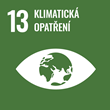Informace o projektu
Regulační úloha nově popsaných transkripcích faktorů rodiny bZIP

- Kód projektu
- GA23-07000S
- Období řešení
- 1/2023 - 12/2025
- Investor / Programový rámec / typ projektu
-
Grantová agentura ČR
- Standardní projekty
- Fakulta / Pracoviště MU
- Středoevropský technologický institut
- Spolupracující organizace
-
Ústav experimentální botaniky AV ČR, v. v. i.
- Odpovědná osoba prof. RNDr. David Honys, Ph.D.
The nascent polypeptide-associated complex (NAC) is in eukaryotes represented by a heterodimer composed of an α- and a β-subunit1. The NAC roles were first studied in yeast and animals. Yeast (Saccharomyces cerevisiae) genome encodes two NACβ homologues (named β1, and β3), and a single NACα gene. The yeast NACβ proteins differed in their affinity to the α-subunit since the α/β1 complex was significantly more abundant than the alternative dimer α/β. The NAC α/β heterodimer usually binds to the newly synthesized nascent polypeptides that emerge from the ribosomes5, 6. On the subcellular level, the NAC complex influenced protein sorting to endoplasmic reticulum or mitochondrion. Moreover, the role of NAC in protein sorting was proven in Caenorhabditis elegans where it blocked the ribosome binding site on the endoplasmic reticulum in case the protein should reside in the cytoplasm. Besides its function as a chaperone and in protein sorting, NAC was also hypothesized to play its role in ribosome biogenesis. The higher eukaryotes require NAC complex for a successful embryo development since its knock down caused embryonic lethality in mouse, nematode and drosophila. Although the function of NAC subunits was considered by now within the heterodimeric complex, their individual roles as single subunits were described as well. The NACβ subunit is also known as basic transcription factor 3 (BTF3), whereas the α-subunit works by itself as a transcriptional co-activator.
Cíle udržitelného rozvoje
Masarykova univerzita se hlásí k cílům udržitelného rozvoje OSN, jejichž záměrem je do roku 2030 zlepšit podmínky a kvalitu života na naší planetě.



